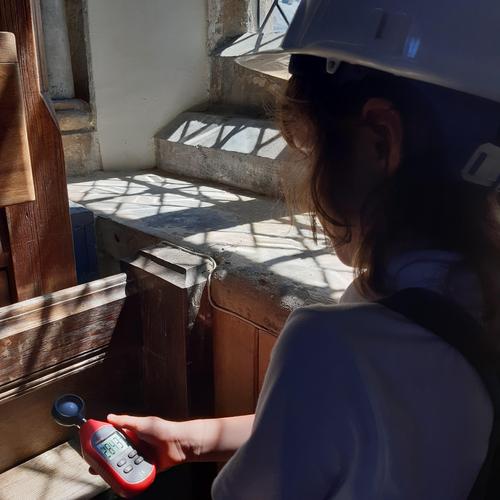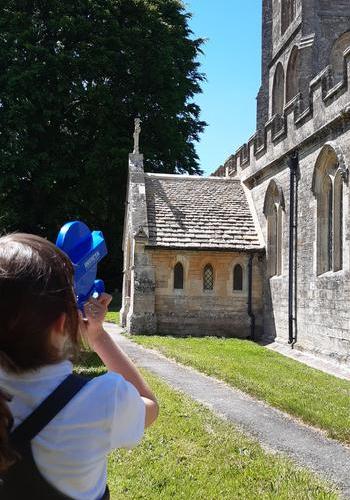Becoming a young Conservation Champion
Every one of our historic churches has a unique story to tell: they are the perfect place to discover something new, whatever your age.
Our Heritage Learning team encourages children and young people to stand in the footsteps of our ancestors, create an inspired artwork - even find out about fungus!
Churches are wonderful places to deliver many aspects of the curriculum and help learning come alive in a practical and local context. Our learning workshop ‘Conservation Champions’ aims to show how Science, Technology, Engineering and Maths (STEM) skills can be applied in real life.
After using compasses to establish our bearings everyone has a chance to undertake three tasks:
Measuring
Trundle wheels and tape measures are used to take measurements. The width of walls can be calculated using internal and external measurements, or the surface area of the floor used to calculate how many tiles would be needed should we have to retile the floor.
For older groups a device called a clinometer gives the angle to the top of the tower, from a known distance, trigonometry then allows you to calculate the height of the tower – from the ground!
Whilst children are having fun learning how to accurately measure using the various apparatus, they’re also learning which units are used in different situations, applying various calculations, and finding out how maths can be used in real-life situations and why it’s important!

Taking Readings
Meters are used to take readings of light, sound, humidity, temperatures, and wind levels (wind is measured with an anemometer). Comparisons can be made of readings taken at different points inside and outside the building – and predictions can be made about whether readings will change or stay the same. This offers a chance to discuss how these variations might impact the building and our conservation work.
Along with learning about the impact these elements can have on our buildings, children discover the units we use to measure each element, make predictions and calculations, theorise, and have a chance to ‘be’ scientists.

Site Inspection
A mini Site Inspection offers a chance to look more closely at the building, inside and outside, considering the condition of walls or roof, measuring cracks with precision tools, checking the lightning conductor, spotting buddleias, and looking for signs of animal activity. Alongside the survey, discussions around why and how these things are factored into conservation work and the knowledge and skills needed to manage the condition of the church are discussed; creating early pathways into heritage careers.

The activity fits well with the STEM curriculum in schools, but can also be used for family activities and adjusted to suit many different ages. STEM steps off the page and into real life and showcases new careers – including craft skills. This activity inspires the next generation to move on to careers in STEM and craft skills, and we hope some will return, as adults, to continue CCT’s vital work.

